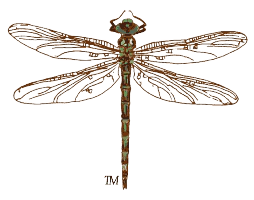The City Nature Challenge
A Citizen Science Project
Image from iNaturalist. Available at https://www.inaturalist.org/projects/city-nature-challenge-2025-austin
Carolyn Langlinais
Get ready for one of the most exciting citizen science projects to hit the global stage: the City Nature Challenge!
Begun in 2016, the City Nature Challenge (CNC) started as a friendly competition between San Francisco’s California Academy of Sciences and Los Angeles’s Natural History Museum. There were three categories of winners: observations, species, and observers. In a four-day iNaturalist bioblitz, Los Angeles County swept all three categories that year. The CNC went national the very next year.
In 2017, the Austin, Houston, and Dallas/Fort Worth metro areas participated. Nationwide, Dallas/Fort Worth recorded the most observations that year, while Houston documented the most species. Los Angeles County had the most people recording observations.
Just two years after its inception, the CNC went global! In 2018, eleven European cities, ten South American cities, and five Asian cities joined in the fun. Texas cities/areas that joined the original three included Amarillo, El Paso, the Lower Rio Grande Valley, and San Antonio. That year, Dallas/Fort Worth placed second globally in total observations, Houston placed sixth in observations, and Austin ranked tenth. Houston, Dallas, Austin, and the Lower Rio Grande Valley all made the top ten globally for species recorded. Dallas and Houston were also in the top ten for the number of observers. What a way to showcase Texas' amazing biodiversity!
In 2021, the CNC broke the one-million-observation mark—one million observations in just four days!
The last weekend of April, Friday, April 25, through Monday, April 28, is the observation period for the CNC this year. You don’t have to formally join the project for your observations to count—simply use iNaturalist to document what you see in Hays County during the CNC weekend, and your data will automatically be included. After the observation phase, upload any remaining observations and help identify species from April 29 to May 4. The final results will be posted on May 5, 2025.
Map from iNaturalist. Available from https://www.inaturalist.org/projects/city-nature-challenge-2024-austin
For the Hays County Chapter of Texas Master Naturalist™, our observations contribute to the greater Austin metro area. The map above shows the 2024 observations for this region.
For the past seven years, the Houston and Dallas/Fort Worth metro areas have led the state in the number of observations and species recorded, and usually have the most observers. Last year, Austin had the fourth-largest number of observers in Texas. Adding Hays County Master Naturalists to the mix is a great way to help push Austin into the lead!
2024 Statistics for metro Austin, including Hays County:
Graphic courtesy Wendy Anderson, Texas Parks and Wildlife Department Texas Nature Trackers
Not only does iNaturalist track citywide statistics, but if you click on the "observers" tab on the stats page, you’ll see a ranked list of contributors by the number of observations recorded. The second year I participated, I discovered this list on the first day and was thrilled to find myself in the top 20 for the Houston metro area. I stayed there until Monday, when veteran observers began uploading their data. While I was entering my observations in real time, they waited until the last night to bulk upload. I ended up finishing in 45th place—not too shabby, but a little bit of a letdown after being in the top 20! Knowing that my observations contribute valuable data on species distribution and population is the real reward, but the friendly competition adds an extra layer of fun.
For those with expertise in specific flora or fauna—or even enthusiastic amateurs—once the observation phase ends, the identification phase begins. Looking at the graph above, a little less than half of the observations from last year were identified. Whether your niche is birds, grasses, frogs, or insects, helping to verify and classify observations is crucial. According to the TMN Guidance for Citizen Science Volunteer Service Hours, time spent identifying CNC observations should be logged in the VMS system in increments of at least 30 minutes.
To assist with the identification process, an identification party will be held at Roughhouse Brewing on Thursday, May 1, from 11 a.m. to 2 p.m. Bring any reference materials you may need to help with species identifications.
Here you can see the number of identifiers falling off.
Observations that don’t have identifications and consequently don’t reach research grade are of no use to researchers or decision makers.
Graphic courtesy Wendy Anderson, Texas Parks and Wildlife Department Texas Nature Trackers
One of the most frequently asked questions about the CNC is whether observations from private property count. The answer is yes, within certain guidelines. Each observation must include a photo and/or sound file, an accurate location, and an indication of whether the subject was wild or cultivated. The TMN Guidance for Citizen Science Volunteer Service Hours states:
Field Data Collection Using the iNaturalist Platform
3[…]b. Data collection: Bioblitz – Data collection as part of a bioblitz conducted on public land, through non-profit agencies and organizations such as nature centers, or on private land if data are shared with projects hosted by Texas Nature Trackers or other approved collection projects, including but not limited to the City Nature Challenge.
How to Prepare for the City Nature Challenge
Download the iNaturalist app to your phone and create an account.
Practice taking photos and uploading observations before the big weekend.
For more help, visit the iNaturalist Getting Started page.
For additional details, visit the City Nature Challenge website.
Check the chapter calendar for upcoming CNC events—we’ll need hike leaders and sweepers to help introduce new participants to bioblitzing and iNaturalist!
Get ready to explore, observe, and contribute to this exciting global effort!




